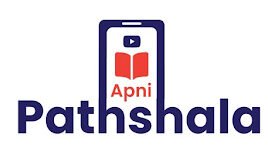|
GS Paper 1: Geographical Features, GS Paper 2: Issues Related to Development GS Paper 3: Water Resources |
Context: Recently, Madhya Pradesh and Rajasthan signed a Memorandum of Understanding (MoU) to implement the Modified Parbati-Kalisindh-Chambal Eastern Rajasthan Canal Project (PKC-ERCP).
This project is part of the Indian Government’s National Perspective Plan (NPP) for river interlinking.
What is the Modified PKC-ERCP?
The Parbati-Kalisindh-Chambal (PKC) project is an interlinking initiative that aims to divert excess water from the Parbati, Newaj, and Kalisindh rivers into the Chambal River.
This project is part of the 30 links outlined in the National Perspective Plan of 1980, developed by the Central Water Commission and the Ministry of Irrigation.
The project intends to optimize water resources in the Chambal basin, benefiting both Madhya Pradesh and Rajasthan. Key rivers involved are:
- Chambal River: Originates at Singar Chouri Peak in the Vindhya Mountains near Indore, Madhya Pradesh, and receives major tributaries such as the Banas, Kali Sindh, Sipra, and Parbati rivers.
- Parbati River: Originates in the Vindhya Range, Sehore District, Madhya Pradesh, with no major tributaries.
- Kali Sindh River: Begins in Dewas District, Madhya Pradesh, and is joined by tributaries like Parwan, Newaj, and Ahu.
Eastern Rajasthan Canal Project (ERCP):
Proposed in 2019 by Rajasthan, the ERCP aims to optimize water resources by transferring surplus monsoon water from the Kalisindh, Parvati, Mej, and Chakan sub-basins to water-deficient areas like the Banas, Gambhiri, Banganga, and Parbati sub-basins.
The project will benefit 13 districts in eastern Rajasthan by providing drinking and industrial water. It will also improve groundwater levels, create irrigation potential for 4.31 lakh hectares, and support the Delhi-Mumbai Industrial Corridor (DMIC) with sustainable water resources.
Modified PKC-ERCP:
This modified version of the PKC project integrates the Eastern Rajasthan Canal Project with the interstate river-linking efforts. It addresses issues like water sharing, cost distribution, and resource exchange between Rajasthan and Madhya Pradesh.
Why is this project needed?
Rajasthan, with 10.4% of India’s total land area, has only 1.16% of the country’s surface water and 1.72% of groundwater resources, underscoring the need for projects like the PKC-ERCP to ensure sustainable water management.
Chambal River: The Chambal River originates south of Mhow, near Indore, and flows through Madhya Pradesh, Rajasthan, and Uttar Pradesh, eventually joining the Yamuna River. The Vindhya and Aravalli ranges bound the river’s basin.
Notable dams and barrages along the Chambal River include the Gandhi Sagar Dam, Rana Pratap Sagar Dam, Jawahar Sagar Dam, and the Kota Barrage. The river is also home to the National Chambal Sanctuary, which is renowned for protecting critically endangered species such as the gharial, red-crowned roof turtle, and the Ganges river dolphin.
Yamuna River: Originating from the Yamunotri glacier in Uttarakhand, the Yamuna River flows through Uttarakhand, Himachal Pradesh, Haryana, and Delhi before merging with the Ganges at Prayagraj. The river has several important tributaries like the Chambal, Sindh, Betwa, and Ken rivers.
National Perspective Plan for Interlinking Rivers:
The National Perspective Plan (NPP) was introduced in 1980 by the Ministry of Jal Shakti to transfer water from surplus to deficit basins across India through artificial channels. The NPP has two main components—the Himalayan and Peninsular rivers—and includes 30 identified link projects, such as the Mahanadi-Godavari and Ken-Betwa links. The plan aims to mitigate floods, address water shortages, improve irrigation, and develop inland waterways for efficient freight transport.
Significance of River Interlinking:
The NPP is crucial for flood management in the Ganga-Brahmaputra-Meghna basin, addressing water shortages in arid states like Rajasthan and Gujarat, and boosting agricultural productivity in water-scarce regions. It also seeks to optimize surface water use and reduce groundwater depletion.
Challenges and Concerns:
While the project promises numerous benefits, it faces challenges like biodiversity loss, displacement of communities, high costs, and interstate water disputes. For example, the Ken-Betwa project is expected to submerge part of the Panna Tiger Reserve, impacting wildlife habitats.
Ken-Betwa River Link Project (KBLP): The Ken-Betwa link is the first project under the National Perspective Plan and aims to transfer water from the Ken River in Madhya Pradesh to the Betwa River in Uttar Pradesh.
National Interlinking of Rivers Authority (NIRA): The NIRA is a proposed independent body that will oversee planning, financing, and implementing river interlinking projects in India, replacing the National Water Development Agency (NWDA). It will handle clearances related to environmental, wildlife, and forest regulations and coordinate efforts with states and neighboring countries.
Explore our Books: https://apnipathshala.com/product-category/books/
Explore Our test Series: https://tests.apnipathshala.com/









